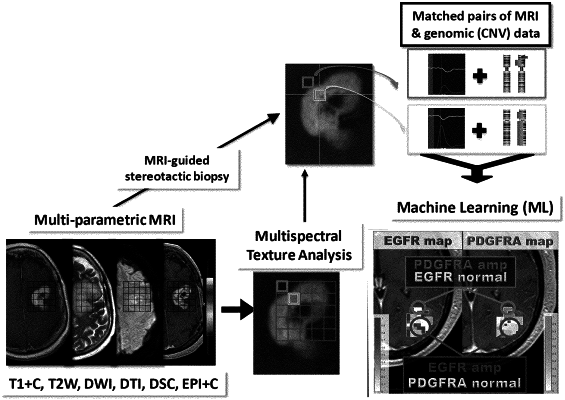| CPC G06V 10/776 (2022.01) [G06T 7/0016 (2013.01); G06T 7/11 (2017.01); G06T 2207/10088 (2013.01); G06T 2207/20081 (2013.01); G06T 2207/20084 (2013.01); G06T 2207/30016 (2013.01); G06T 2207/30096 (2013.01)] | 28 Claims |

|
1. A method for constructing and implementing a machine learning model to generate at least one image that depicts spatial patterns of genetic interactions across a region-of-interest in a subject, the steps of the method comprising:
constructing a trained machine learning model by:
(i) accessing training data with a computer system, the training data comprising radiological imaging data acquired from one or more subjects and biological feature data determined from biopsies collected from the one or more subjects;
(ii) quantifying regional genetic interactions in the one or more subjects from the biological feature data;
(iii) training a machine learning model based on the training data and the quantified regional genetic interactions in the one or more subjects, wherein the machine learning model is trained on the training data to localize distinct subpopulations across a region-of-interest; and
generating an image that depicts spatial patterns of a genetic interaction across a region-of-interest in a subject by inputting images acquired from the subject to the trained machine learning model;
wherein quantifying regional genetic interactions in the one or more subjects from the biological feature data includes quantifying correlations between different biomarkers.
|